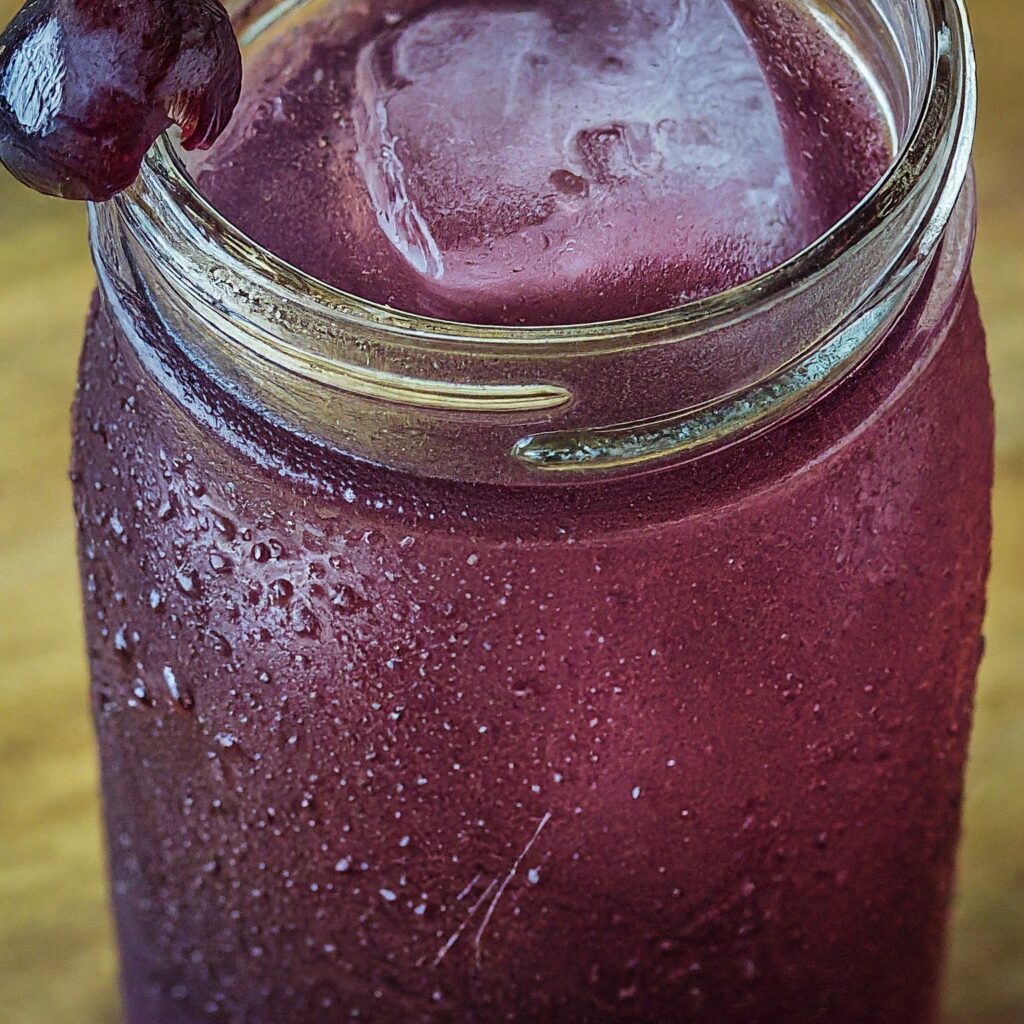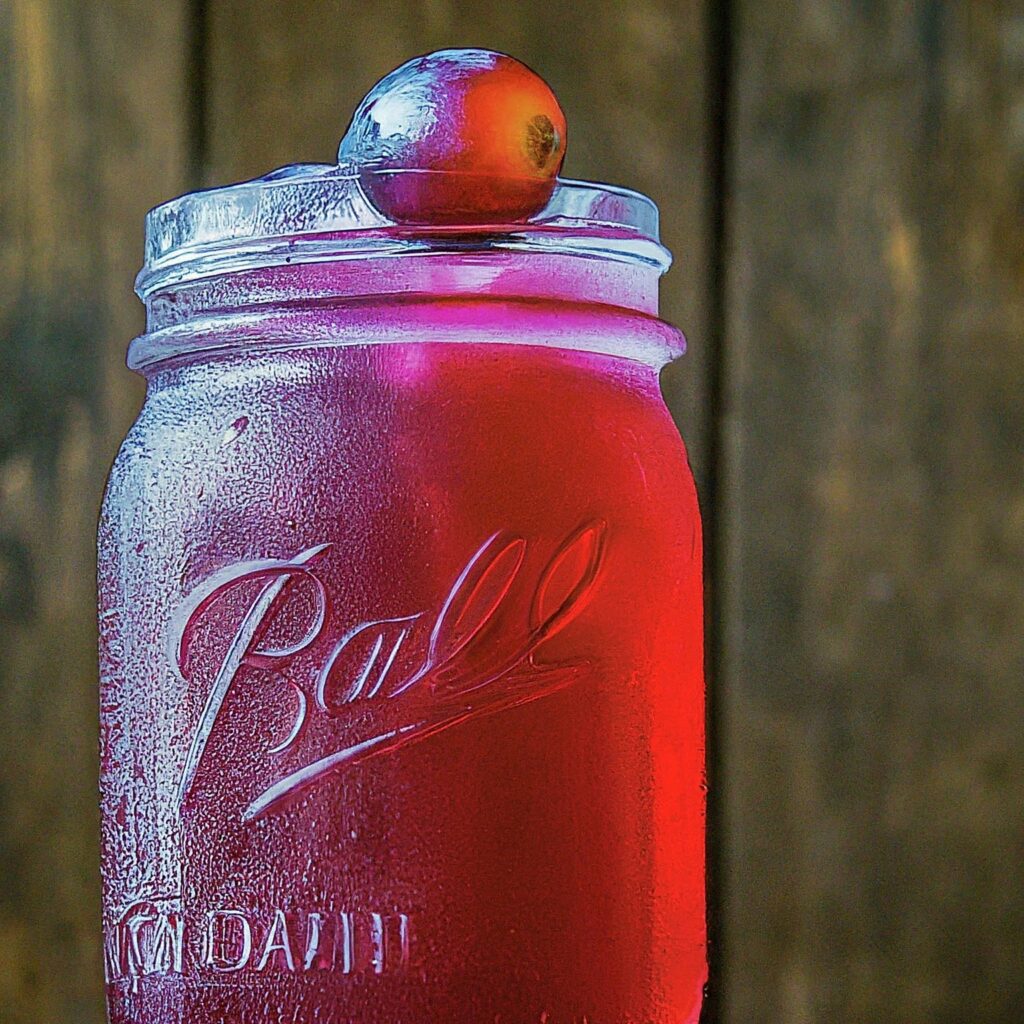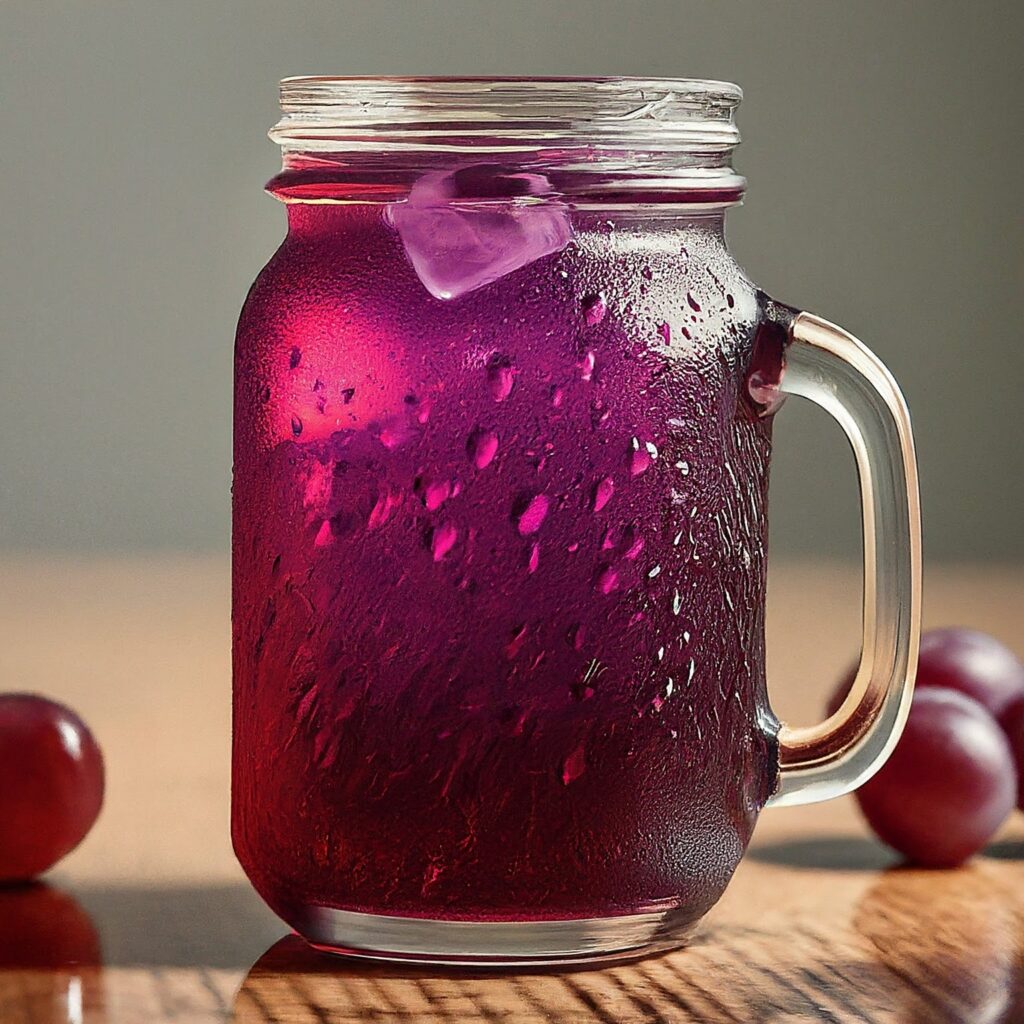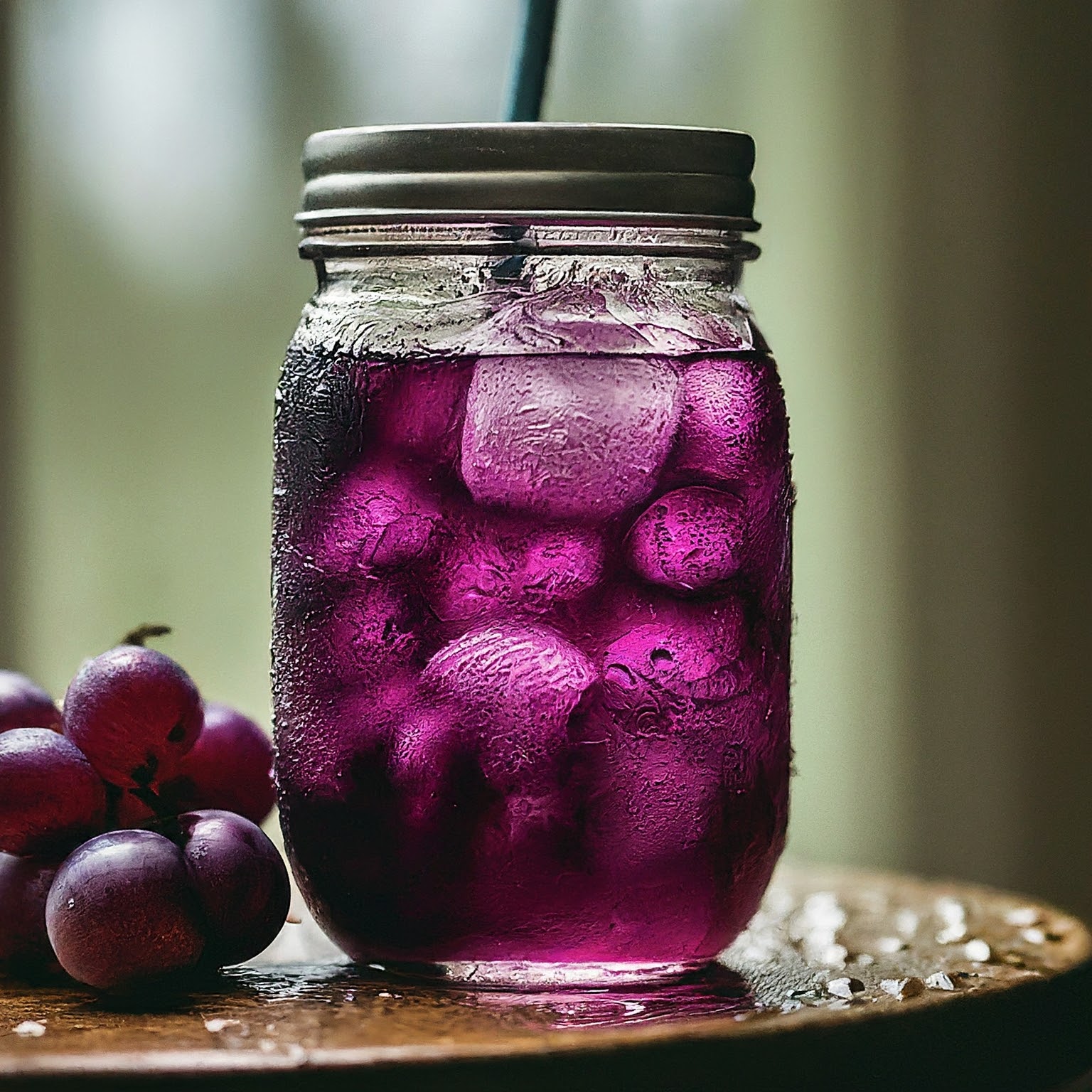Introduction
Grape moonshine conjures images of a clandestine nighttime activity under a silvery moon, an age-old tradition of distilling spirits that whispers tales of heritage and craft. This potent homemade brew, often referred to as ‘grappa’ when made from grapes, is a beloved concoction for many spirit enthusiasts. It’s not only a celebration of self-sufficiency and skill but also a nod to the rich tapestry of American folklore where moonshine has its illicit roots. Yet, in today’s era, this potent potable stands as a testament to the enduring legacy and evolving craft of distilling.
Grape Moonshine Recipe
Ingredients:

- 6 cups fresh grapes (any variety)
- 2 cups granulated sugar
- 1 cup water
- 1 teaspoon lemon juice
- 1 cinnamon stick (optional)
- 1 liter grain alcohol (such as Everclear)
Instructions:
- Wash the grapes thoroughly and remove any stems.
- In a large saucepan, combine the grapes, granulated sugar, water, lemon juice, and cinnamon stick (if using).
- Bring the mixture to a boil over medium-high heat, then reduce the heat and simmer for about 20-30 minutes, until the grapes have softened and released their juices.
- Remove the saucepan from the heat and let the mixture cool to room temperature.
- Once cooled, strain the mixture through a fine mesh sieve or cheesecloth to remove the grape solids, pressing down to extract as much liquid as possible.
- Discard the solids and transfer the grape liquid to a clean container.
- Stir in the grain alcohol until well combined. Be cautious as the alcohol content is high.
- Transfer the grape moonshine to sterilized mason jars or bottles.
- Seal the containers tightly and store them in a cool, dark place for at least 2 weeks to allow the flavors to meld.
- Shake the jars gently before serving.
- Serve the Grape Moonshine chilled or over ice. Enjoy responsibly!
- Experience the sweet and tangy flavors of grapes in this homemade

Grape Moonshine Recipe: A Complete Guide to Homemade Spirits
Ingredients
Instructions
History of Moonshine
The term ‘moonshine’ historically alluded to any illegal home-distilling activities carried out under the cover of darkness. It dates back to the early days of American settlement, where the practice offered a way to avoid hefty liquor taxes and carried on through the Prohibition era as a symbol of rebellion. The word itself evokes a sense of mystery and defiance, with grape moonshine bearing the standard of a deep, flavorful tradition that transforms the humble grape into a vibrant, high-proof spirit. Exploring this lineage is not just about the drink but the stories of the people who made and shared it, from the hills of Appalachia to the vineyards of Italy.
In the next sections, we’ll dive into the legality of moonshine today and why grapes make an exceptional choice for crafting this homemade spirit.
The Legality of Moonshine
Before embarking on the journey of making grape moonshine, it’s crucial to understand the legal landscape. While homemade beer and wine have been given the nod in many jurisdictions, distilling spirits at home without proper permits remains illegal in most countries, including the United States. This is due to both the potential for unsafe production methods and the government’s interest in regulating alcohol for quality and taxation purposes. If you’re considering making your own moonshine, it’s imperative to check the laws in your area and obtain the necessary licenses.
Ingredients List

To craft a batch of grape moonshine, the following ingredients are the foundation for creating a rich, flavorful spirit:
- Fresh Grapes: Approximately 20 pounds for a small batch. Darker grapes are typically preferred for a more robust flavor.
- Sugar: This will vary depending on the natural sweetness of your grapes, but a general guideline is 2 pounds of sugar per 5 gallons of mash.
- Distilled Water: Ensures no impurities affect the fermentation process.
- Yeast: Wine yeast is ideal for grape moonshine, as it’s formulated to handle higher sugar content and alcohol levels.
- Yeast Nutrient: To support healthy yeast activity during fermentation.
Remember, the quality of your ingredients will significantly influence the taste of your final product. Selecting the best available grapes and other components will contribute to the excellence of your moonshine.
Equipment Needed
The right equipment is essential to safely and effectively produce moonshine. Here’s what you’ll need to get started:
- Fermentation Vessel: A food-grade bucket or carboy that can hold your mash.
- Siphon: For transferring the liquid without disturbing the sediment.
- Airlock and Stopper: To allow gases to escape without letting air in.
- Hydrometer: To measure the specific gravity of the mash, which helps determine alcohol content.
- Pot Still or Reflux Still: Necessary for the distillation process. Make sure to purchase from a reputable supplier to ensure safety and quality.
- Heating Source: Often a propane burner or electric element suitable for your still’s size.
- Thermometer: To monitor the temperature during distillation.
- pH Meter or Test Strips: To ensure the correct acidity level of your mash.
Equipped with your ingredients and tools, you’re well on your way to crafting homemade grape moonshine. The process is akin to creating a fine cocktail, where precision and attention to detail are key—similar to crafting the layered complexity of a Lemon Meringue Martini. The next section will guide you through the step-by-step process of turning grapes into a smooth, sippable spirit.
Step-by-Step Grape Moonshine Recipe
Making grape moonshine involves several stages: preparation, fermentation, and distillation. Follow these steps to create your own homemade spirit.
Preparation:
- Crush the Grapes: Begin by thoroughly washing your grapes and then crushing them to release the juices. This can be done manually or with a crusher if available.
- Create the Mash: Transfer the crushed grapes into your fermentation vessel. Add distilled water following your recipe’s proportions, usually a 1:1 ratio with the crushed grapes.
- Add Sugar: Dissolve sugar into the mixture. The amount will vary based on the grapes’ natural sweetness and your desired alcohol content.
- Cool the Mash: Ensure the temperature of the mash is around 70°F (21°C) before adding yeast, to not kill the yeast with excessive heat.
- Add Yeast: Sprinkle wine yeast and yeast nutrient into the mash, following package instructions for quantities.
Fermentation:
- Seal with Airlock: Place the airlock and stopper onto your fermentation vessel to keep out air while allowing gases to escape.
- Store: Keep the fermentation vessel in a dark, cool place where the temperature is consistent.
- Monitor: Check the mash daily, noting the airlock activity and the smell. Fermentation is typically complete when bubbles cease to escape the airlock, which can take 1-2 weeks.
- Test: Use a hydrometer to test the specific gravity. When readings are consistent over a few days, fermentation is likely complete.
Distillation:
- Prepare the Still: Clean your still thoroughly and set it up according to the manufacturer’s instructions, ensuring it’s airtight.
- Transfer the Wash: Siphon the fermented wash into the still, being careful to leave sediment behind.
- Heat: Begin to heat the wash. As it warms, alcohol vapors will rise and pass through the condenser, reverting to liquid form.
- Collect: The first liquid (foreshots) contains impurities and should be discarded. After that, collect the “hearts,” which is the best quality alcohol. Finish by collecting the “tails,” which can be re-distilled or discarded.
Safety Tips for Distilling at Home
Distillation must be done carefully to ensure a safe and successful process. Here are some crucial safety tips:
- Ventilation: Distill in a well-ventilated area to avoid the buildup of alcohol vapors.
- Fire Safety: Have a fire extinguisher nearby and never leave the still unattended.
- Temperature Control: Monitor the temperature closely. Sudden spikes can be dangerous.
- Consumption Safety: Know which parts of the distillate are safe to consume (the hearts) and which are not (foreshots and tails).
The detailed process of making grape moonshine is as complex and nuanced as the drink itself, much like the layers of flavor in our Drunken Snowman Cocktail. With patience and attention to detail, you can transform simple grapes into a deeply satisfying moonshine. Next, we’ll discuss the importance of aging and flavoring to further refine your moonshine’s character.
Aging and Flavoring
Once distillation is complete, aging and flavoring your moonshine can significantly enhance its complexity and smoothness.
Aging:
- Choosing Containers: Traditionally, moonshine is aged in oak barrels. The charred interior of the barrel can impart a smooth, woody flavor to the spirit. If barrels are not available, oak chips or staves can be used in a glass or stainless-steel container.
- Duration: Aging can range from a few months to several years. Taste your moonshine periodically to determine when it has reached your preferred flavor profile.
Flavoring:
- Natural Ingredients: Consider adding fruits, spices, or herbs to your moonshine during the aging process. Grape moonshine can be flavored with the grape skins themselves or other berries for a deeper fruit flavor.
- Experimentation: The beauty of homemade moonshine is the ability to experiment. Try different combinations and quantities of flavoring agents to create a signature blend.
Common Mistakes to Avoid
Avoiding Contamination: Always use clean equipment. Contamination can spoil the moonshine and can be dangerous.
Monitoring the Temperature: Distillation requires precise temperature control. Too high or too low can affect the quality of your moonshine.
Patience is Key: Rushing the process can result in a less than desirable product. Allow time for proper fermentation and aging.
Taste Testing: Don’t bottle all your moonshine immediately after distillation. Save some for taste testing to see if further aging or flavoring is needed.
Respect the Process: Making moonshine is both a science and an art. Each step from fermentation to distillation and aging is crucial to the quality of your final product.
With the right approach to aging and flavoring, your homemade grape moonshine can rival the complexity of store-bought spirits. It’s a journey of discovery, similar to refining the flavors in a crafted cocktail such as the Lemon Meringue Martini or Drunken Snowman, both of which can be explored further for inspiration on our site. In the next section, we’ll cover serving suggestions to ensure your moonshine is enjoyed to its fullest potential.
Serving Suggestions

Once your grape moonshine has been perfected, serving it in a manner that complements its rich flavors and homemade character is the next delightful step. Here are some suggestions for presenting your moonshine:
- Neat: Serve your grape moonshine neat at room temperature to allow the full range of flavors and aromas to shine through. Use small glasses and pour modest amounts for sipping.
- On the Rocks: For those who prefer a chilled spirit, serving moonshine over ice can be refreshing, especially if the moonshine has a higher alcohol content.
- Cocktails: Utilize your homemade moonshine as the base for creative cocktails. The grape flavor pairs well with citrus, herbs, and other spirits. For inspiration, explore the possibilities as you would with any fine spirit in recipes like the Drunken Snowman Cocktail.
- With Food Pairings: Pair your moonshine with food that complements its flavors. Charcuterie boards, cheeses, and dark chocolate can enhance the tasting experience.
- As a Gift: Bottle your grape moonshine in decorative jars adorned with labels and ribbons, making for a personal and thoughtful gift.
Preservation and Storage
Proper storage is critical to maintaining the quality of your grape moonshine:
- Cool, Dark Place: Store moonshine in a cool, dark place away from direct sunlight. Sunlight can alter the flavor of the moonshine over time.
- Airtight Containers: Use airtight containers to prevent oxidation, which can affect the taste of the moonshine.
- Glass is Best: Glass bottles are preferred for storage as they do not react with the alcohol and maintain the purity of the flavor.
- Label and Date: Keep track of aging by labeling and dating each batch. This will also help you monitor the development of flavors as the moonshine ages.
With these serving and storage tips, your grape moonshine can be a source of pride and pleasure for years to come. By understanding the nuances of presenting and preserving your homemade spirit, you elevate the experience from simply enjoying a drink to savoring a craft. In the next section, we’ll answer some common FAQs to help clear up any remaining questions about the moonshine-making process.
FAQs
Q: How long does grape moonshine need to ferment before it’s ready for distillation? A: Grape moonshine typically needs to ferment for about 1 to 2 weeks, but this can vary. You’ll know fermentation is complete when the airlock stops bubbling and the specific gravity readings are consistent for a few days.
Q: Can I reuse the grape mash for another batch of moonshine? A: While the bulk of the sugars and fermentable materials are used up in the first batch, some moonshiners will “re-run” the mash, adding more sugar and water to ferment a second batch, although it may be less potent.
Q: How can I tell if my moonshine has gone bad? A: Moonshine doesn’t spoil like perishable food, but it can develop an off taste if it’s been improperly stored or exposed to sunlight. If you notice any changes in the color or odor, it’s best to err on the side of caution and discard it.
Q: Do I need a special kind of yeast for making grape moonshine? A: Wine yeast is recommended for grape moonshine because it is tailored to ferment grape sugars and tolerate higher alcohol levels. This type of yeast helps ensure a complete and clean fermentation.
Q: What should I do if my moonshine has a strong, unpleasant odor after distillation? A: A strong, unpleasant odor can be a sign of “tails,” which contain fusel oils. Discarding the tails during distillation can prevent this. Aging the moonshine can also help mellow out harsh flavors.
Q: Is it necessary to age moonshine, or can I drink it right away?
A: While you can drink moonshine immediately after distillation, aging it allows for the development of a smoother, more rounded flavor, particularly with grape moonshine where the complexities of the fruit can evolve over time.
Q: How much moonshine will I get from 20 pounds of grapes? A: The yield from distilling moonshine can vary widely depending on the efficiency of your fermentation and distillation process. Generally, you can expect about a 10-20% yield by volume from your starting liquid.
For further guidance on craft cocktails to enjoy with your homemade spirits, consider exploring recipes such as the Lemon Meringue Martini for creative ideas that could complement your distilling journey.
Conclusion
The process of creating grape moonshine from scratch is an enriching experience that connects you to a deep-rooted tradition of spirit making. From the initial selection of succulent grapes to the final sips of a well-aged batch, every step brings its own satisfaction. With the right preparation, equipment, and respect for the craft, you can transform simple grapes into a remarkable homemade moonshine that embodies the essence of artisanal distillation. Whether enjoyed neat, over ice, or as part of a handcrafted cocktail, your grape moonshine is a testament to patience, skill, and the joys of home distilling.



Why do people continue to call stuff they do not distill moonshine. This is 100% not moonshine it is a mixed drink. Moonshine is any illegally made distilled alcohol. Not something bought at the store. It saying this would t taste good but stop trying to sell it as something it is not. This is a mixed drink made with grain whiskey you can buy at the store.